
| Back to Index |
April 9, 2007 – U.S. payroll employment (released Friday) rose by 180K in March (Chart 1) after a revised 113K February increase (originally +97K). Revisions added a total of 32K to the prior two months’ payroll growth.
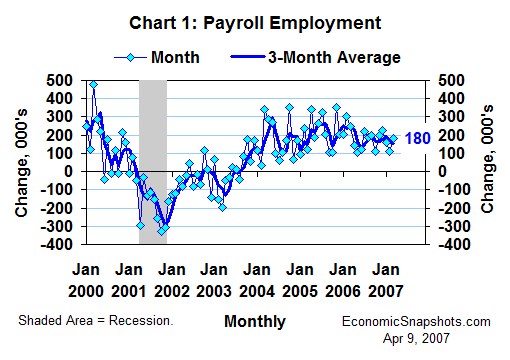
All of the acceleration in March job growth can be blamed on weather-related volatility in construction hiring. Construction payrolls rebounded by 56K in March, roughly reversing February’s 61K decline (Chart 2).
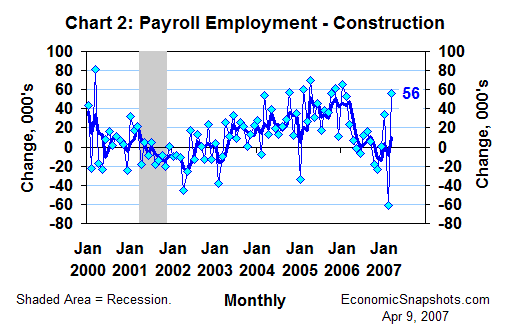
Payroll growth averaged 152K per month for the three months through March (Chart 3). This three-month trend has been fluctuating in a moderate-growth range (150K to 202K) for the last nine months – neither strong enough nor weak enough to provoke any changes in U.S. monetary policy.
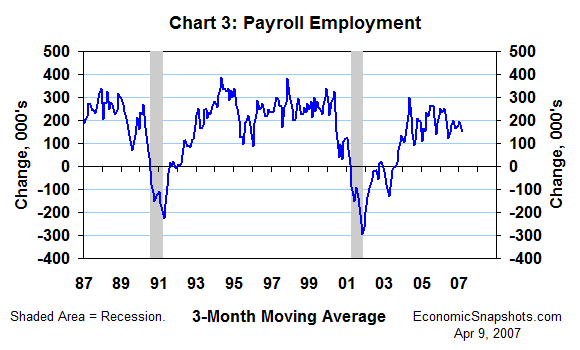
The unemployment rate was essentially unchanged in March, edging down by 0.1 percentage point to 4.4% (Chart 4). The unemployment rate has been steady at about 4.5% since September last year. That’s about a half percentage point below the Congressional Budget Office’s estimate of its “full employment” level, suggesting a relatively tight labor supply.
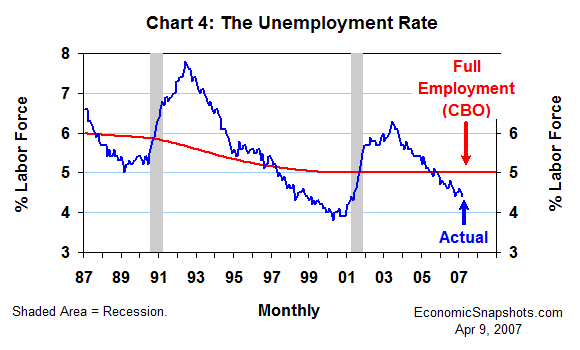
This relatively low unemployment rate should help to keep FOMC members worried about the economy’s inflation risks.
Average hourly earnings rose by 4% in March, compared to the same month last year (Chart 5). This twelve-month trend in nominal earnings growth has been running at about 4% since last April.
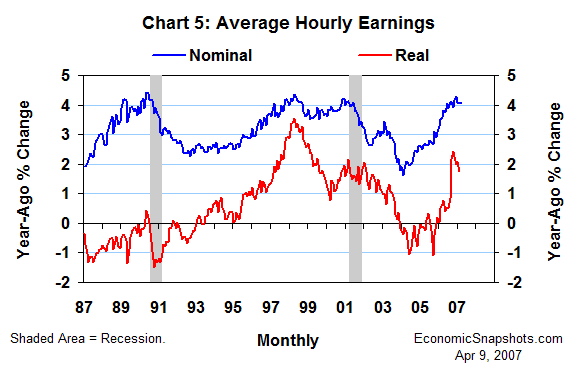
Whether this relatively strong trend in earnings growth actually poses an inflation threat, or not, depends in part on the behavior of other labor compensation costs, as well as on labor productivity growth. Further, as Fed Chairman Bernanke argued (again) in March, unusually high profit margins suggest that firms can currently afford to pay their workers more compensation without raising their prices.
In the longer-term, the FOMC is counting on a “moderate” pace of real economic growth to gradually reduce the economy’s inflationary pressures. The relatively subdued trend in payroll job growth through March should reinforce that expectation.
Bottom line: Some weather-driven volatility, but underlying labor-market trends held steady through March. The outlook continues to favor no change in U.S. monetary policy.
Suzanne Rizzo